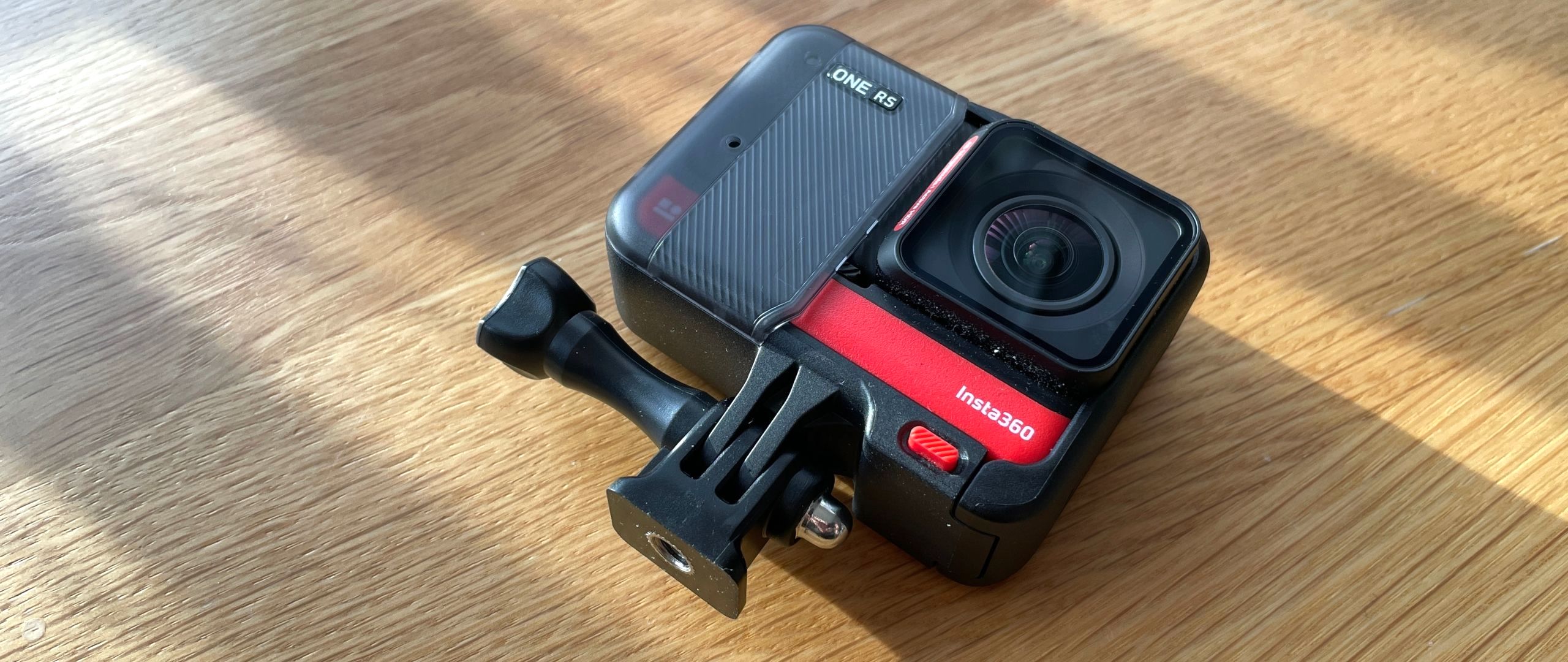Digital Camera World Verdict
The second-gen version of the only action camera with an add-on 360º lens impresses with a longer battery life, higher resolution stills and a new widescreen 2.35:1 aspect ratio. Insta360’s FlowState stabilisation is smooth and now more versatile with lots of AI-powered auto-editing features in an excellent smartphone app.
Pros
- +
4K and 360º lens options
- +
Unique modular design
- +
Impressive ‘FlowState’ stabilisation
- +
6K widescreen mode
Cons
- -
More expensive than first version
- -
Needs a carry case or bag
- -
Editing and exporting takes time
- -
Hi-res files require desktop software
Why you can trust Digital Camera World
The Insta360 ONE RS is an all-in-one action camera that can handle everything from making movies to vlogging and even creating 360º action sequences. It's now in its second iteration, which retains the essentials of the Insta360 ONE R Twin Edition and expands upon it with more quality and performance.
The Insta360 ONE RS is significantly more expensive than the first version. For the extra outlay you get the same modular design – battery base, core module and a choice of two lens modules (one 4K, one 360º) – but with better specs all-round… mostly.
Specifications
4K Boost Lens
Aperture: F2.4
35mm Equiv. Focal Length: 16mm
Photo Resolution: 8000x6000 (4:3)
Video Resolution: 6016x2560@25/24fps (6K Widescreen), 3840x2160@24/25/30/50/60fps,
ISO Range: Photo 100-6400, Video 100-6400
Weight: 125.3g
Dimensions (W x H x D): 70.1x49.1x32.6mm
Run Time: 75 minutes
360 Lens
Aperture: F2.0
35mm Equiv. Focal Length: 7.2mm
Photo Resolution: 6080x3040 (2:1)
Video Resolution: 5760x2880@30/25/24fps,
ISO Range: Photo 100-3200, Video 100-3200
Weight: 135.3g
Dimensions (W x H x D): 70.1x49.1x43mm
Run Time: 82 minutes
Key features
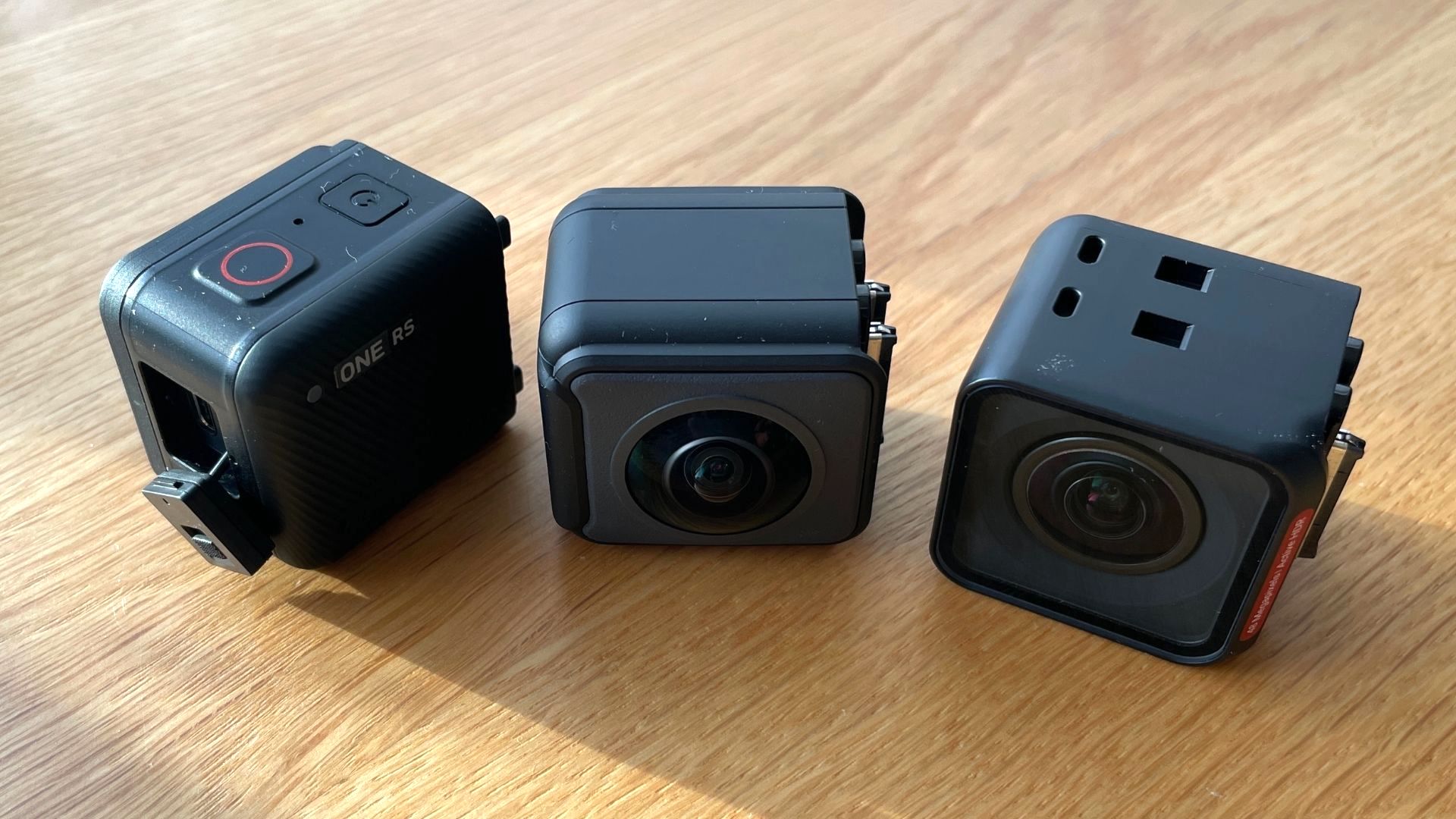
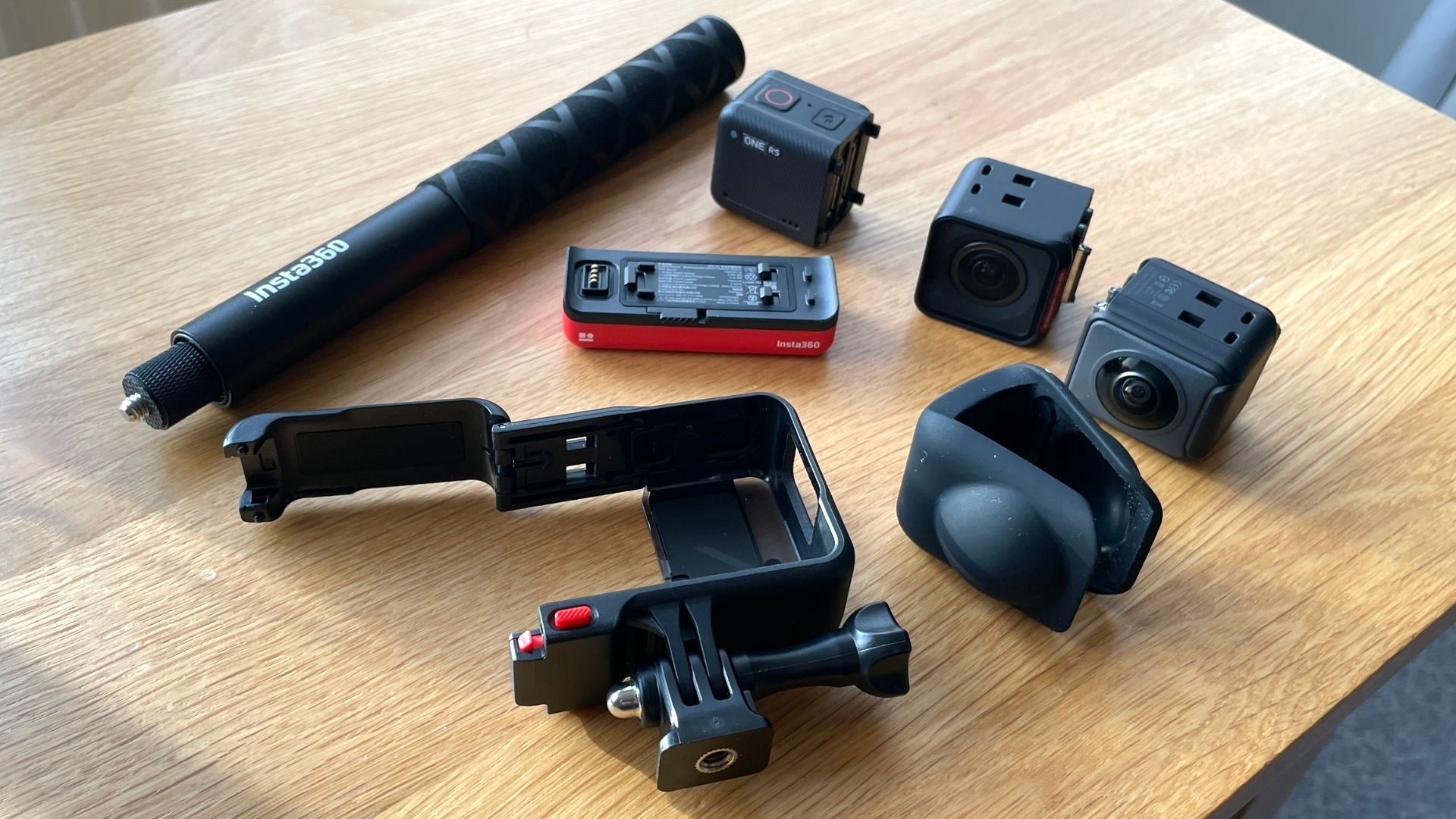
The ONE RS’s all-new battery base (39g) has a bigger capacity battery than before – 1445mAh compared to the 1190mAh found on the original. It acts as a platform to click-on a core module (45g), which contains the electronics and a tiny screen, and a lens.
There are two lenses in this Twin Edition to choose from; a 16mm wide-angle 4K Boost Lens (43g) and a 7.2mm 360º fisheye lens (41g). It’s really simple simple to swap them out, though since there’s also a wraparound mounting bracket (52g), a lens cover (23g) and an extendable selfie stick (28-120cm, 138g) we do think there should be some kind of carry case or bag included to keep everything together. It’s able to go underwater to a depth of 5m/16.4 feet.
The entire set-up when assembled weighs 177g in both the 4K and 360º configurations, but it’s that all-new core module that’s doing a lot of the heavy lifting. It outputs up to 100mpbs video bitrate video using the H.265 codec and also outputs in the ProRes422 lossless format (if you use Insta360’s Studio desktop software).
Both lenses can capture in raw – as DNG files – as well as JPG. New for this version is that its boosted processing power enables the handling of still images in various resolutions up to 48MP, stills and video in Active HDR, and a new 6K widescreen mode that uses an aspect ratio of 2.35:1 and a frame rate of either 24p or 25p. More importantly, its flagship video mode – 4K 60fps – now comes with Insta360’s impressive gimbal-like FlowState Stabilization.
Audio-wise, the ONE RS now has three three microphones – one-up on the original model – with the mounting bracket also adding a windproof cover. It’s also possible to record a narration track wirelessly using a pair of Apple AirPods.
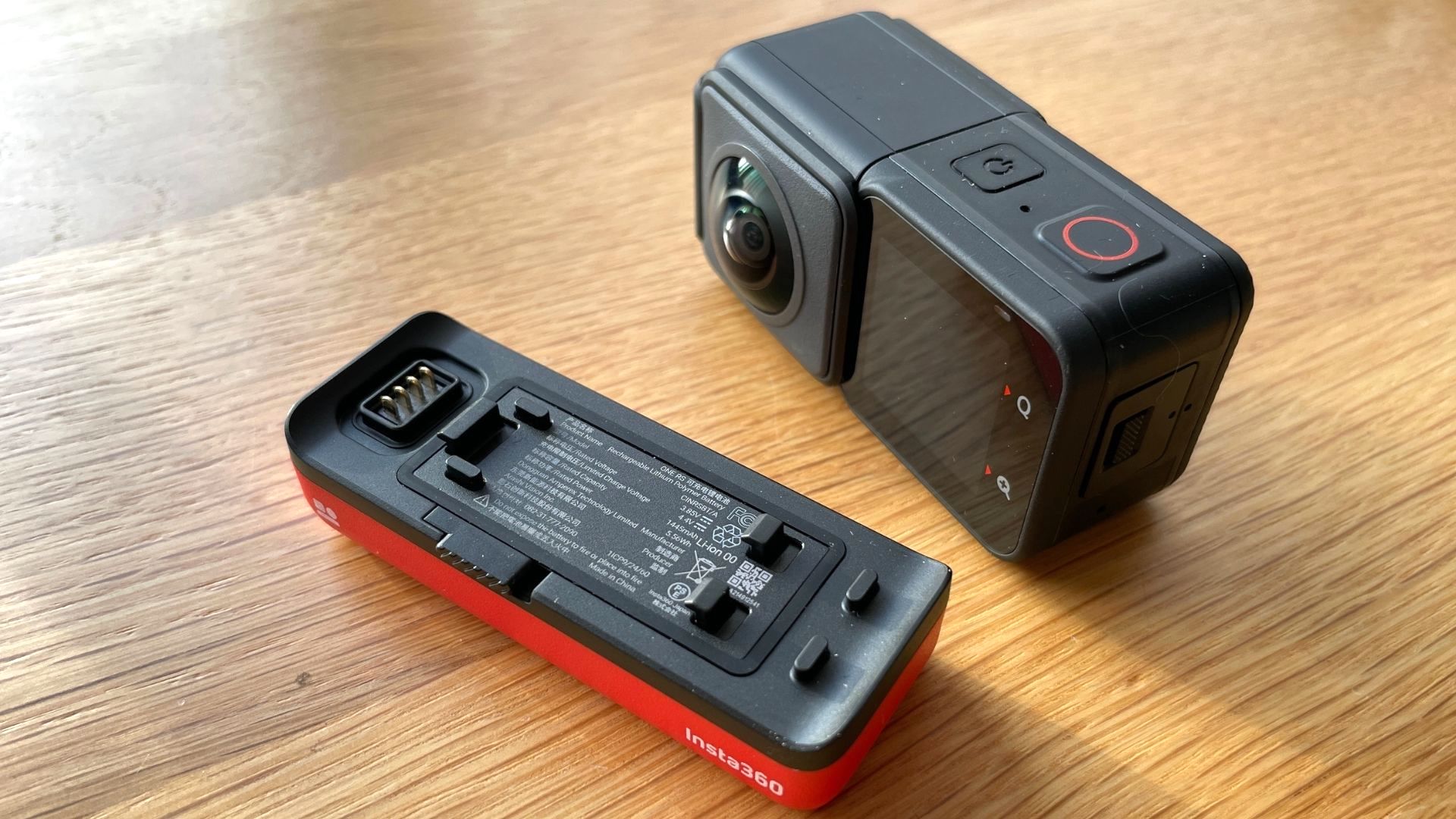
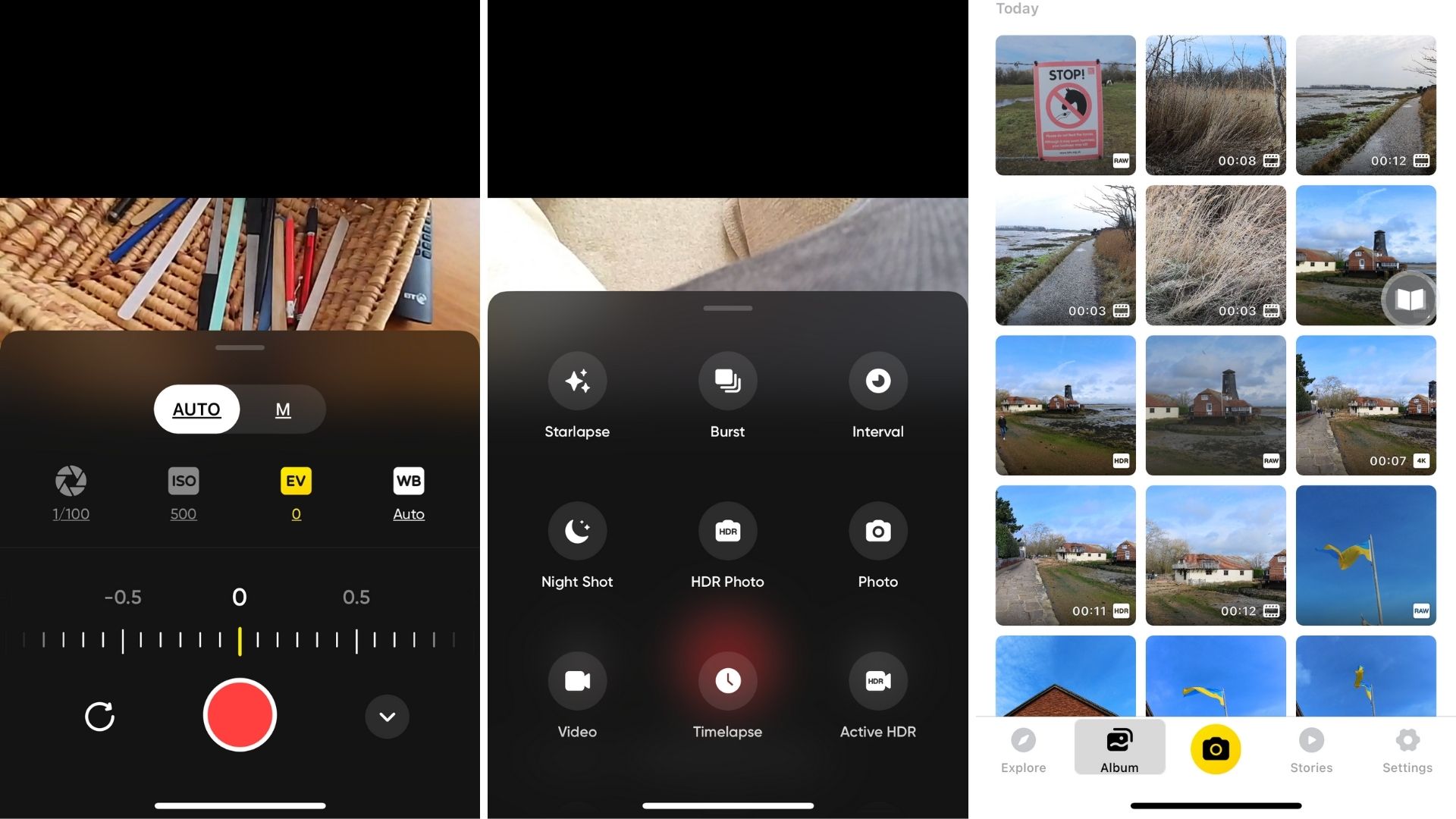
Though there are a plethora of new video-centric modes on the ONE RS, the six-axis gyroscope FlowState Stabilization remains the most important. Like GoPro’s HyperSmooth, this in-camera algorithm creates a super-smooth ‘gimbal-like’ stabilization with no editing required. It works on 4K 60fps video captured with the 4K Boost Lens.
The last attempt had HDR, but the ONE RS adds Active HDR, which is uniquely designed for capturing sports and fast action outdoors (though not in low light conditions). This video mode retains details in highlights and shadows and boosts colour, but also adds some FlowState Stabilization.
Rather less expected on an action camera is a new 6K Widescreen Mode, which shoots 6016x2560 pixel video with a classic Hollywood-style 2.35:1 ratio and a cinematic frame rate of either 24p or 25p (though Insta360 Studio is required to process 6K widescreen videos). Meanwhile, the 360º lens has a horizon levelling mode that allows you to rotate the camera as much as you want without the horizon moving. A quick calibration is required.
When using the ONE RS you can swipe left and right to toggle between the various modes. For photos there’s Standard, HDR, Interval, Night Shot, Starlapse, Burst, PureShot – with images in 16:9, 9:16 and now in 2.35:1 widescreen – while for video there’s Standard Video, Slow Motion, Active HDR, Timelapse, TimeShift, Loop Recording and 6K Widescreen.
The 360º records everything in 5.5K 30fps, so here it’s mostly about the post-processing and templates, of which there are a few new ones; ‘CineLapse’ – a transition-heavy hyperlapse — and the trippy ‘Horizon Levelling’ join dozens more.
Editing via the app now comes with a new Snap Wizard mode, which allows you to move your phone or swipe to reframe.
Although we’re reviewing the Insta360 ONE RS Twin Edition package here there is an action camera-only version called the Insta360 ONE RS 4K Edition and the Insta360 ONE RS 1-Inch Edition. The latter features a 1-inch sensor and wide angle lens (14mm).
Build and handling
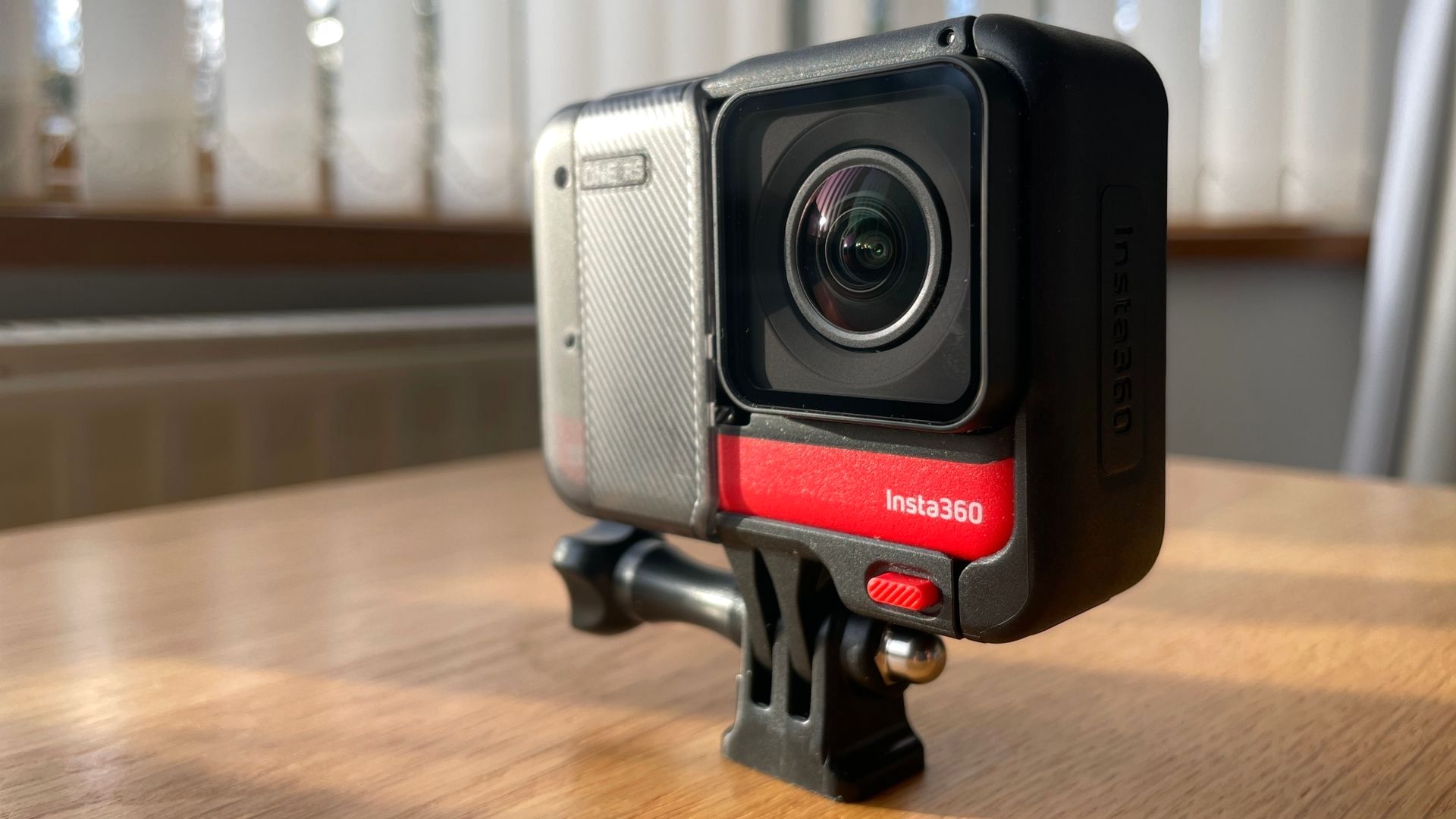
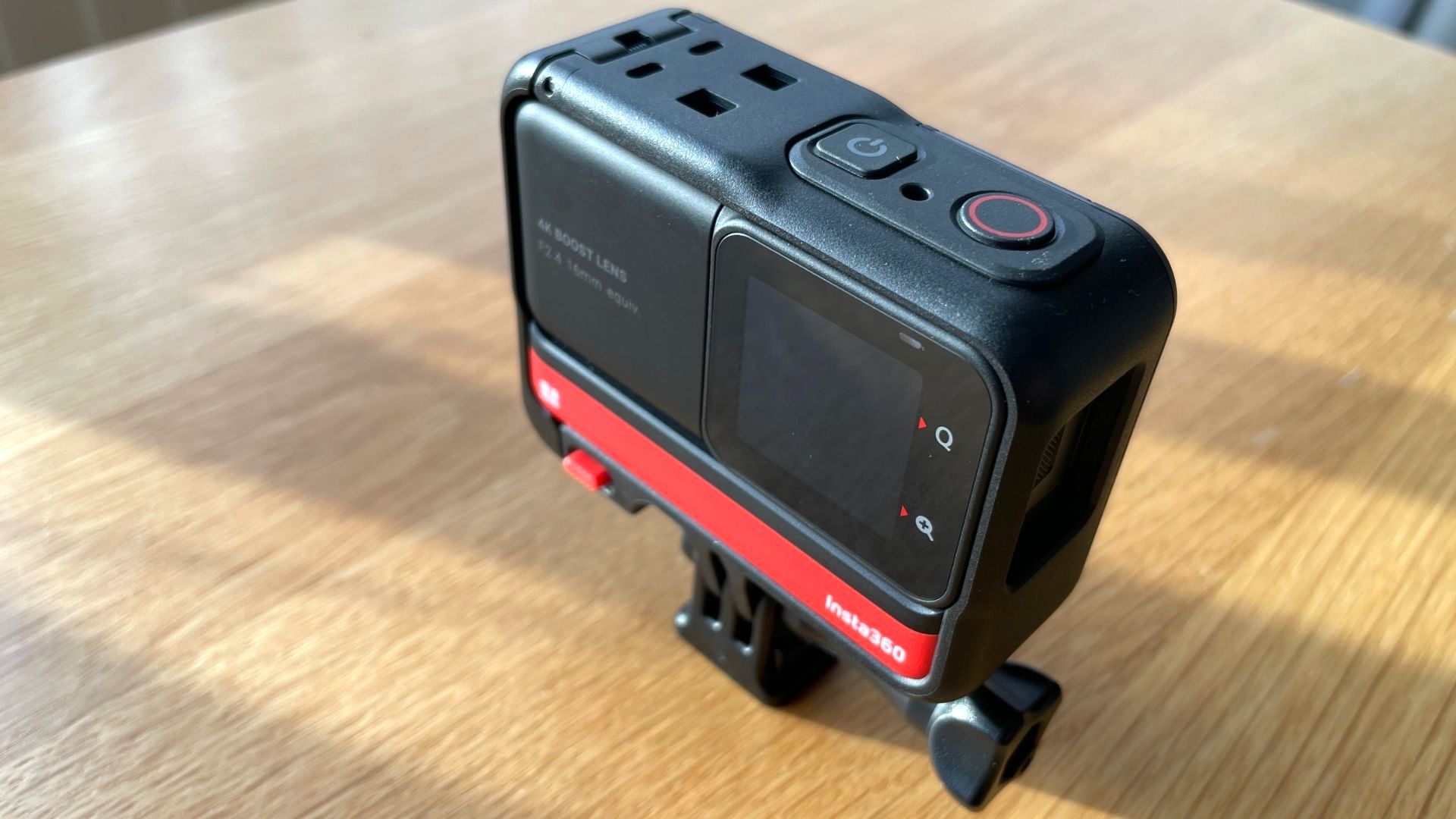
Although you don’t have to use it, the new mounting bracket supplied with the ONE RS turns out to be pretty useful. Not only does it add a certain peace of mind to add wraparound support to the three modules clicked together, but it allows you to use the device both underwater and with an ‘invisible’ selfie stick. The latter is included in the package and is cleverly processed-out of finished 360 images and video to disappear completely.
The modules themselves are easy to snap together, though their orientation can be changed; you can have the core module – which features the preview screen – either facing backwards or forwards, vlogger-style.
However, that screen is small. It’s dynamic, changing orientation and according to the aspect ratio of the video or photos you’re creating, but its 24x24mm size make it hard to use for anything other than making sure your subject is roughly in the centre of the screen. Despite that tiny size, it works well enough for doing a piece to camera.
It’s a touchscreen, of course, and it’s a cinch to swipe between all the main modes and find other options by swiping up and down.
There’s a small U-shaped lens cap to protect the 360º lens, which is a wise idea since that’s the one destined to be left in a pocket during a shoot. However, it would be nice to have a similar custom-fit lens cap for the 4K Boost lens for when the 360º lens is being used.
The Insta360 app really impressed us. It’s super-stable and reliable, attaching a phone to the Insta360 ONE RS Twin Edition without problems and sharing files faster than the first-gen model. It certainly feels like trading files over WiFi is faster than on the previous version, though some of its headline features – such as 6K widescreen mode and 48MP PureShot photos – can’t be used with the app; you’ll need to use the (free) Insta360 Studio software on a desktop computer for those.
Performance
Here are some sample images showing the photo quality from the Insta360 ONE RS:
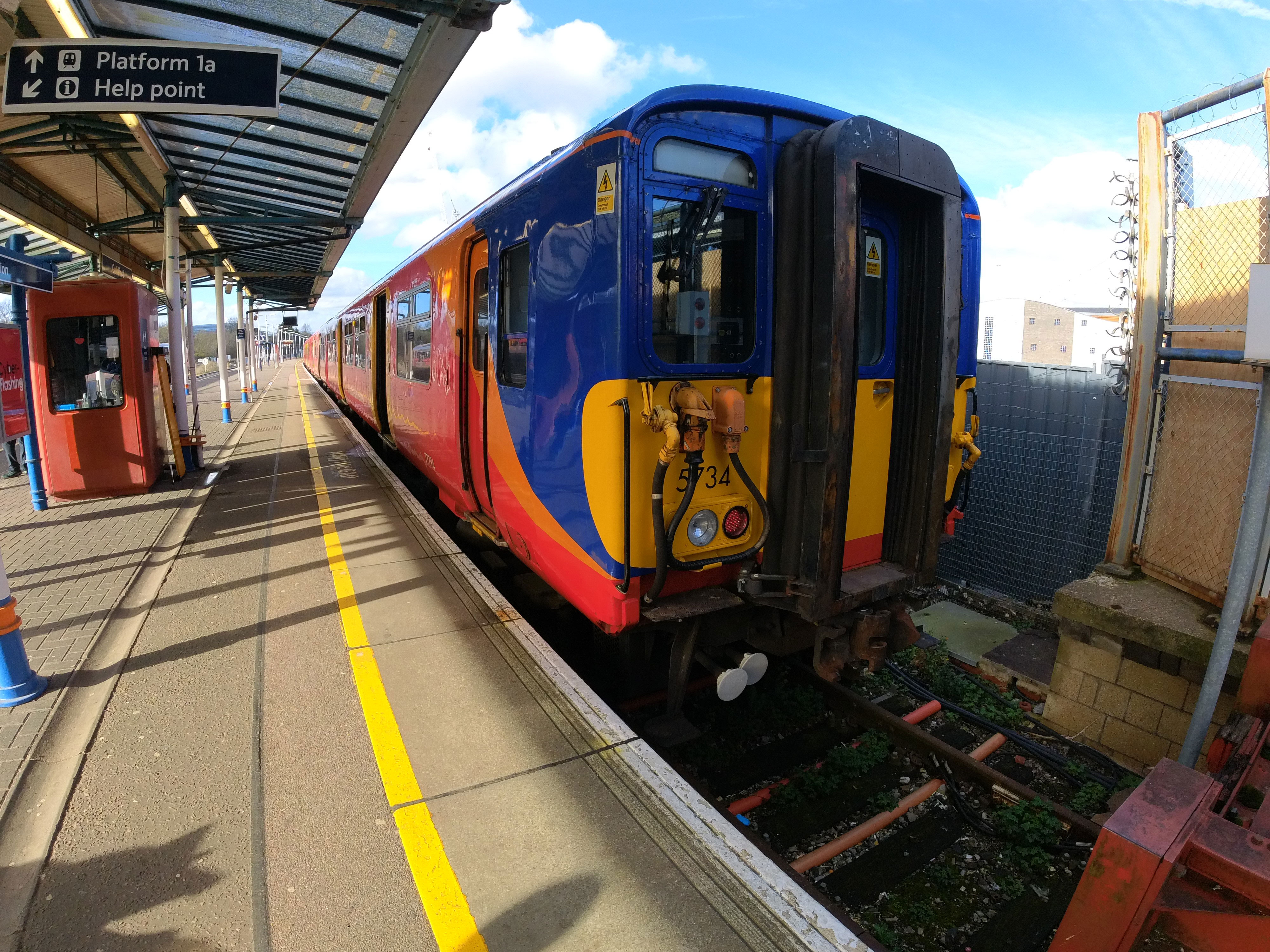
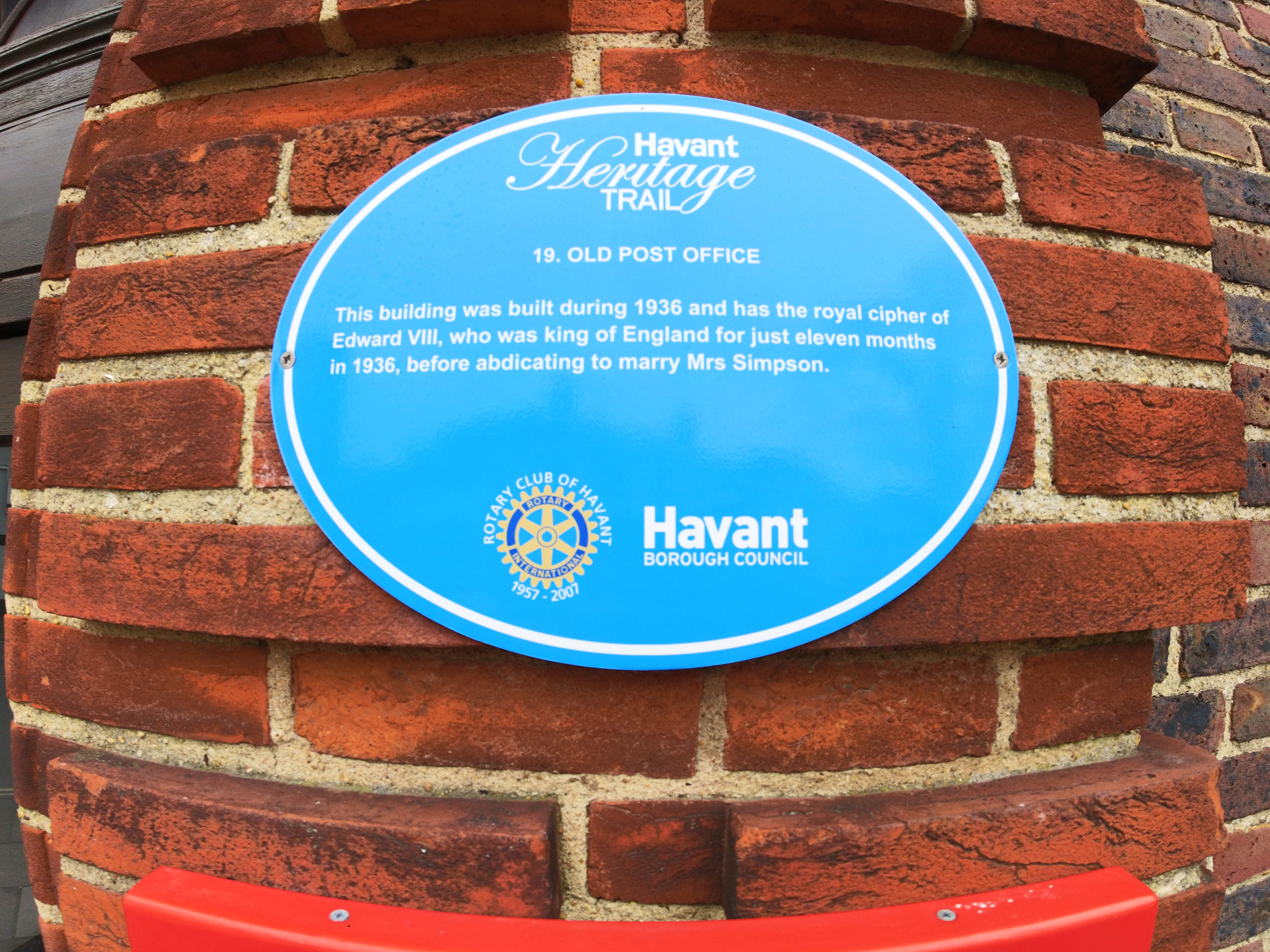
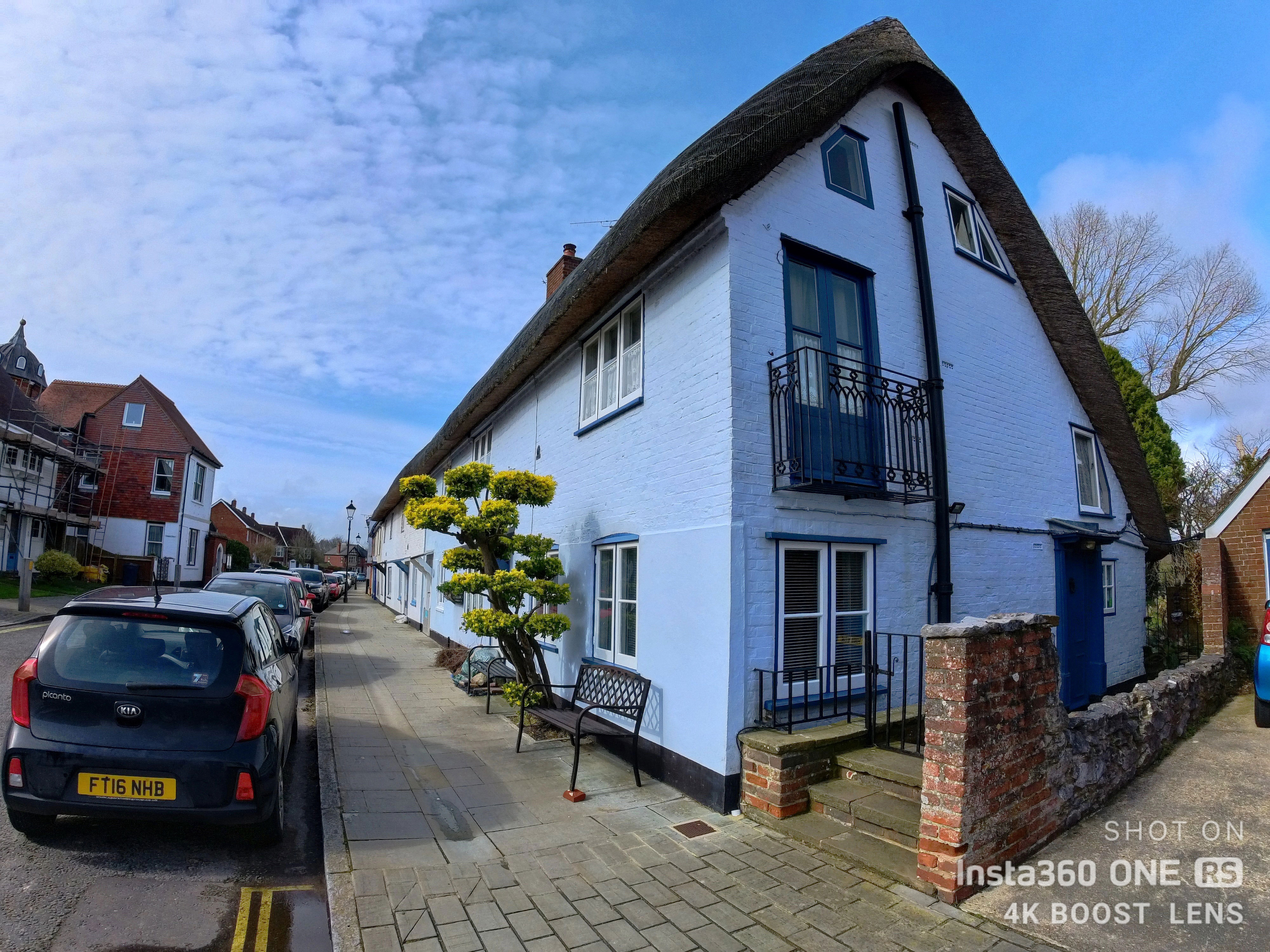
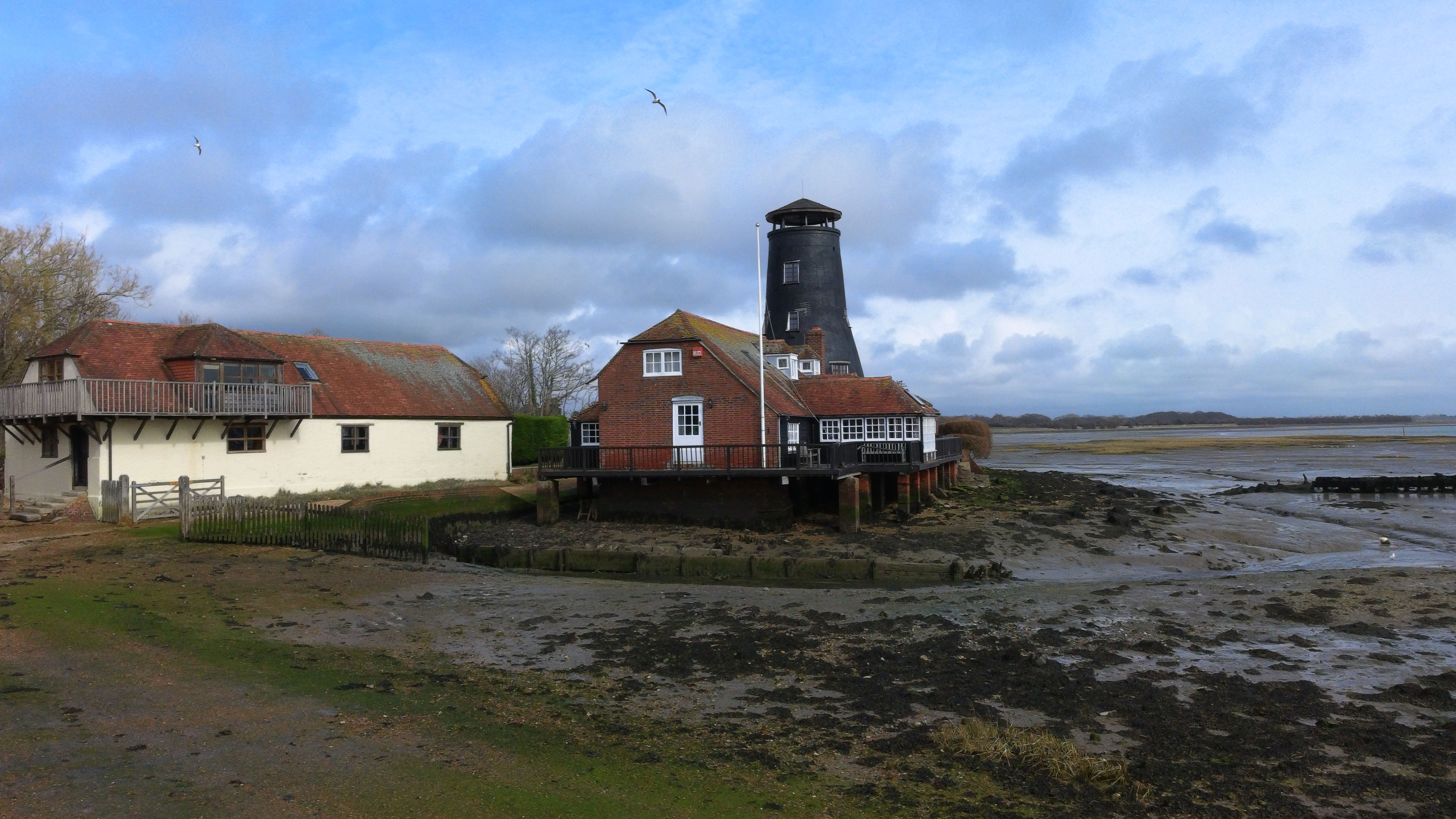
There’s a lot of quality here, with the Insta360 ONE RS Twin Edition capable of some very clean and detailed 4K video boasting excellent image stabilisation. It also trades in great-looking wide-angle photos.
The 4K Boost Lens produces some clean, pin-sharp video that is fabulously colourful and vibrant, though it’s best to steer clear of Color Plus, which brightens shadowed areas yet also adds an odd look to some colours.
It’s hard to overstate how impressive FlowState is for action shots, and even for smoothing out camera pans on regular video. We’re not completely convinced about the need for 6K Widescreen mode, largely because FlowState disappears and camera pans therefore look a little jumpy… but then that’s what ‘cinematic’ generally means. Some users will love its raw ‘as the (old) director intended’ look. We prefer anything with FlowState.
Here are two sample videos showing the 4K Boost and 360 camera modules in action:
Although it’s easy enough to re-frame 16:9 footage shot by the 360º lenses, there is a noticeable loss of resolution. It’s actually the app’s incredible Shot Lab editing templates – which offer step-by-step instructions to create fun clips – that really bring the 360º lens alive. The newest editing template is CineLapse effect, where AI selects the highlights from up to six two-minute clips recorded by slinging the ‘invisible' selfie stick fully extended and slung over your shoulder. It splices them together to create an epic 360º showreel that looks like you’ve employed a drone, though it takes 10 minutes to process and another 15 minutes to export to your phone if you go for the maximum quality – 2560x1440 30fps at 100mbps.
Another new template is Horizon Levelling, which takes one 20-second sequence of you holding the ONE RS high above your head using the selfie stick and turns it into an odd but dynamic mirror-style splice clip. It uses AI to recognise the forward view and you can manually alter the field of view and the top-bottom distance. Again, the result is a drone-like follow-me video, albeit a little crazy.
The only issue with Shot Lab is that despite it telling you exactly what to do to satisfy the needs of each template it’s very difficult to tell from the camera roll exactly which clip is relevant to each template.
Photos taken using the ONE RS are impressive, with bags of detail and colour accuracy. 8000x6000 pixel ‘PureShot’ images from the 4K Boost Lens impress, though they take a few seconds to capture. HDR images are best used for quicker casual snaps, which can be handled by the app on a phone.
While the audio impresses, it’s still prone to wind interference despite the new mounting bracket, though it’s definitely muted.
Battery life is now well over an hour, thanks to that higher-capacity battery base, which takes around an hour to recharge via its USB-C slot. We got about 75 minutes using the 4K Boost Lens and a touch longer from the 360º. Note that transferring files to and from the camera is energy-sapping. Ditto editing on a smartphone using the Insta360 app.
Verdict
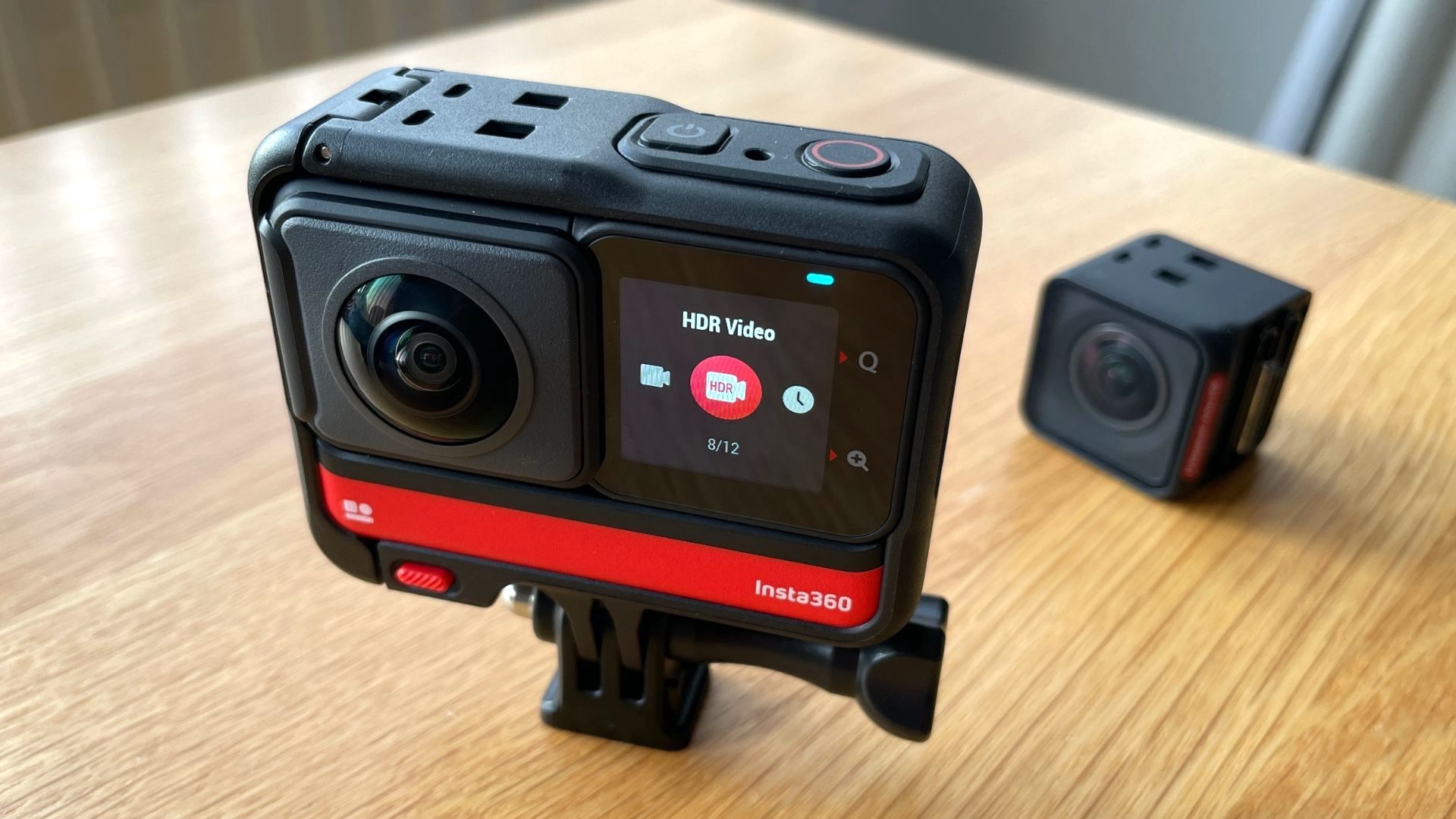
Is the Insta360 ONE RS a novelty or a serious filmmaking device? Unique in the market, the ONE RS is designed to appeal to anyone who would normally consider a GoPro yet yearns to at least have a go at 360º.
The fact that its 360º lens is unchanged from the first-gen version does indicate that the format has settled-in as a nice option for occasional use but one that lacks much more development, which chimes with us. That lens does allow a lot of creative options and we love how the Insta360 app provides templates to create natty 360º sequences from clips, but most users will rely on its 4K Boost Lens.
This is more capable than the first-gen version, but we’re not convinced how useful the 6K widescreen feature really is. Much more useful is the ability to record in great-looking 4K, which was always pin-sharp and ultra-smooth.
The next big step in 360º won’t arrive until cameras like the ONE RS pack an 8K sensor – something that will allow re-framing to 16:9 without a lot of resolution loss – but for now the versatile ONE RS makes for an impressive upgrade that should have wide appeal… albeit to those with deep pockets.

Jamie has been writing about photography, astronomy, astro-tourism and astrophotography for over 15 years, producing content for Forbes, Space.com, Live Science, Techradar, T3, BBC Wildlife, Science Focus, Sky & Telescope, BBC Sky At Night, South China Morning Post, The Guardian, The Telegraph and Travel+Leisure.
As the editor for When Is The Next Eclipse, he has a wealth of experience, expertise and enthusiasm for astrophotography, from capturing the moon and meteor showers to solar and lunar eclipses.
He also brings a great deal of knowledge on action cameras, 360 cameras, AI cameras, camera backpacks, telescopes, gimbals, tripods and all manner of photography equipment.
